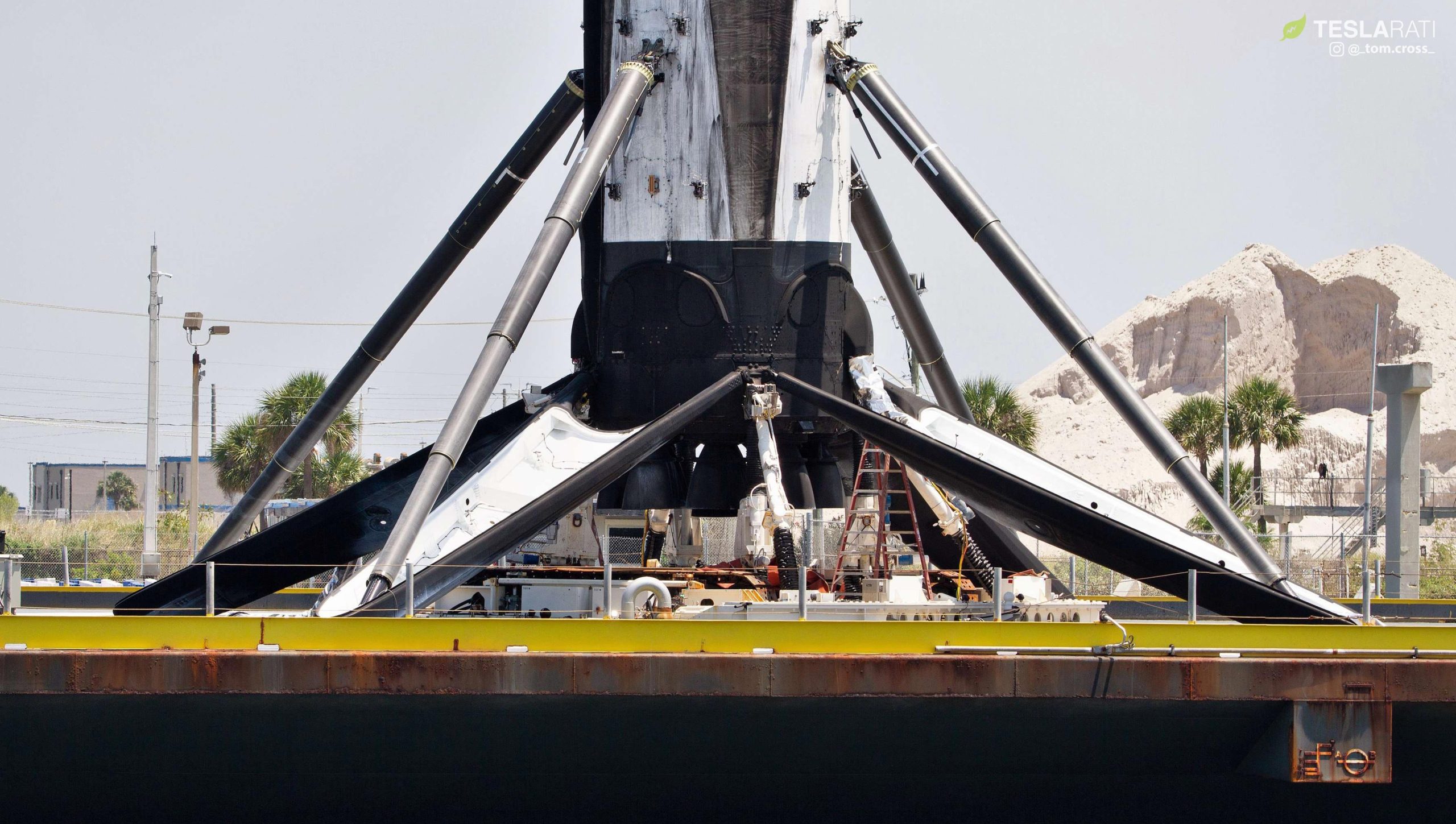
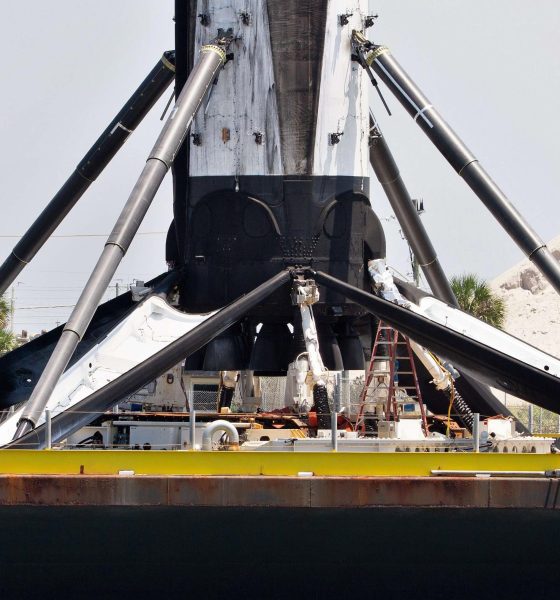
News
SpaceX beats Falcon 9 recovery records after company’s heaviest launch ever
Completed on May 30th, SpaceX’s latest Falcon 9 booster recovery smashed several internal speed records, unofficially cataloged over the years by watchful fans.
In short, as the company’s experienced recovery technicians continue to gain experience and grow familiar with Falcon 9 Block 5, the length of booster recoveries have consistently decreased in the 12 months since Block 5’s launch debut. Already, the efficiency of recovery processing has gotten to the point that – once SpaceX optimizes Block 5’s design for refurbishment-free reuse – there should be no logistical reason the company can’t fly the same booster twice in ~24-48 hours.
The road to rapid reusability
Rarely will it make headlines, but the fact remains that SpaceX’s ultimate goal is not just to reuse Falcon 9 (and other) boosters, but to do so with a level of routine efficiency approaching that of modern passenger aircraft. It’s reasonable to assume that chemical rockets might never reach those capabilities, but they may certainly be able to improve enough to radically change the relationship between humans and spaceflight.
Along that line of thinking, SpaceX CEO Elon Musk decided years ago that an excellent representative goal for Falcon 9 would be to launch the same booster twice in 24 hours. In the last year or so, that largely arbitrary target has changed a bit and is now believed to be a bit wider, aiming for booster reuse within a few days of recovery. This is a pragmatic adjustment more than a technical criticism of Falcon 9.
In general, Falcon 9 simply doesn’t have the performance necessary for routine reusability timelines measured in hours. The majority of SpaceX launches need enough of Falcon 9’s performance to necessitate recovery aboard one of SpaceX’s two drone ships, typically stationed at least a 200-300 km (100-200 mi) offshore. That fact alone almost single-handedly kills any chance of sub-24-hour booster reuse, given that the process of towing the booster-carrying drone ship back to port happens at a max speed of ~10 mph (15 km/h). Just gaining permission to enter the port itself often involves waits of 6+ hours a few miles offshore.
Low orbit, low mass Falcon 9 missions are much more promising for extremely rapid reusability, given that both of SpaceX’s West and East coast landing zones are located just a few miles (or less than 1500 feet, in the case of LZ-4) from their corresponding launch pads and processing facilities. However, these missions are quite rare, while SpaceX’s own low Earth orbit (LEO) Starlink launches will likely involve payloads so heavy that long-distance drone ship recoveries will be necessary.


Finally, there are Falcon Heavy launches, most of which will allow for both side boosters to return to the Florida coast for landings at LZ-1/LZ-2. However, these pose their own barriers to rapid reuse, mainly due to the fact that side boosters – while technically just Falcon 9 boosters – would need major changes to support a single-stack Falcon 9 launch. Falcon Heavy launches simply aren’t going to happen back-to-back over a period of 24-48 hours, so that option is also out of the question.
This means that SpaceX’s only real option for practical rapid reuse is to instead focus on something closer to a weekly launch capability for Block 5 boosters, meaning that the same booster would be able to launch, land, return to shore, and prepare for the next launch in the same week. Even then, launch site readiness may still stand in the way of truly radical improvements in booster reuse and launch frequency. After each launch, SpaceX’s pads and transporter/erectors take a significant beating, requiring routine repairs and maintenance before returning to flight-readiness. Barring major improvements, SpaceX has demonstrated minimum launch-to-launch times of roughly 10 days, and cutting that figure by 50-90% will be a major challenge for a rocket as powerful as Falcon 9.
B1049 takes a step forward
Despite the many logistical reasons that Falcon 9 will likely never lend itself to routine ~24-hour reusability, having that latent capability would still mean that the hardware is advanced enough to offer that efficiency. Even if SpaceX can’t literally fly each booster at its operational capacity, nearly refurbishment-free reflights will still translate into dramatically lower launch costs. Modern civilian aircraft need not fly every second of every day to still be affordable to operate (excluding amortization costs).
Ultimately, SpaceX has been taking small steps in that direction ever since the company began recovering (and reusing) Falcon 9 boosters. Falcon 9 B1049’s third recovery has been one of the best (and most record-breaking) steps yet, but those records were only just broken The most significant statistic to come out of the post-Starlink v0.9 recovery is that B1049.3 took less than 30 hours to go from docking in port to being horizontal on a SpaceX booster transporter. The previous record-holder was Falcon 9 B1046.2, requiring approximately 40 hours for the same feat. B1049.3 also holds the record for fastest recovery overall – just 48 hours from docking to being transported to a SpaceX hangar – but only beat B1051 by about half an hour. In general, Falcon 9 Block 5 has been privy to consistently quick recovery operations and B1049 is just the latest in a long line of reusable SpaceX rockets.



Check out Teslarati’s Marketplace! We offer Tesla accessories, including for the Tesla Cybertruck and Tesla Model 3.

News
Tesla owners could be impacted by new EV tax credit extension rule
We confirmed with a Tesla Sales Advisor that any current orders that have the $7,500 tax credit applied to them must be completed by December 31, meaning delivery must take place by that date. However, it is unclear at this point whether someone could still claim the credit when filing their tax returns for 2025 as long as the order reflects an order date before September 30.
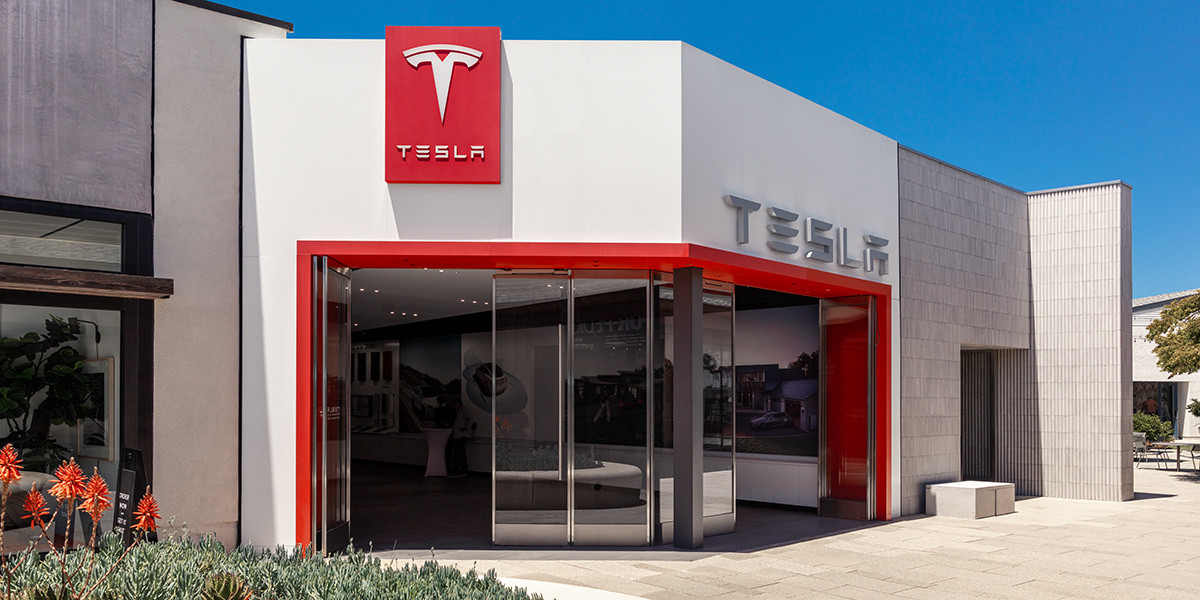
Tesla owners could be impacted by a new EV tax credit rule, which seems to be a new hoop to jump through for those who benefited from the “extension,” which allowed orderers to take delivery after the loss of the $7,500 discount.
After the Trump Administration initiated the phase-out of the $7,500 EV tax credit, many were happy to see the rules had been changed slightly, as deliveries could occur after the September 30 cutoff as long as orders were placed before the end of that month.
However, there appears to be a new threshold that EV buyers will have to go through, and it will impact their ability to get the credit, at least at the Point of Sale, for now.
Delivery must be completed by the end of the year, and buyers must take possession of the car by December 31, 2025, or they will lose the tax credit. The U.S. government will be closing the tax credit portal, which allows people to claim the credit at the Point of Sale.
🚨UPDATE: $7,500 Tax Credit Portal “Closes By End of Year”.
This is bad news for pending Tesla buyers (MYP) looking to lock in the $7,500 Tax Credit.
“it looks like the portal closes by end of the year so there be no way for us to guarantee the funds however, we will try our… pic.twitter.com/LnWiaXL30k
— DennisCW | wen my L (@DennisCW_) December 15, 2025
We confirmed with a Tesla Sales Advisor that any current orders that have the $7,500 tax credit applied to them must be completed by December 31, meaning delivery must take place by that date.
However, it is unclear at this point whether someone could still claim the credit when filing their tax returns for 2025 as long as the order reflects an order date before September 30.
If not, the order can still go through, but the buyer will not be able to claim the tax credit, meaning they will pay full price for the vehicle.
This puts some buyers in a strange limbo, especially if they placed an order for the Model Y Performance. Some deliveries have already taken place, and some are scheduled before the end of the month, but many others are not expecting deliveries until January.
Elon Musk
Elon Musk takes latest barb at Bill Gates over Tesla short position
Bill Gates placed a massive short bet against Tesla of ~1% of our total shares, which might have cost him over $10B by now
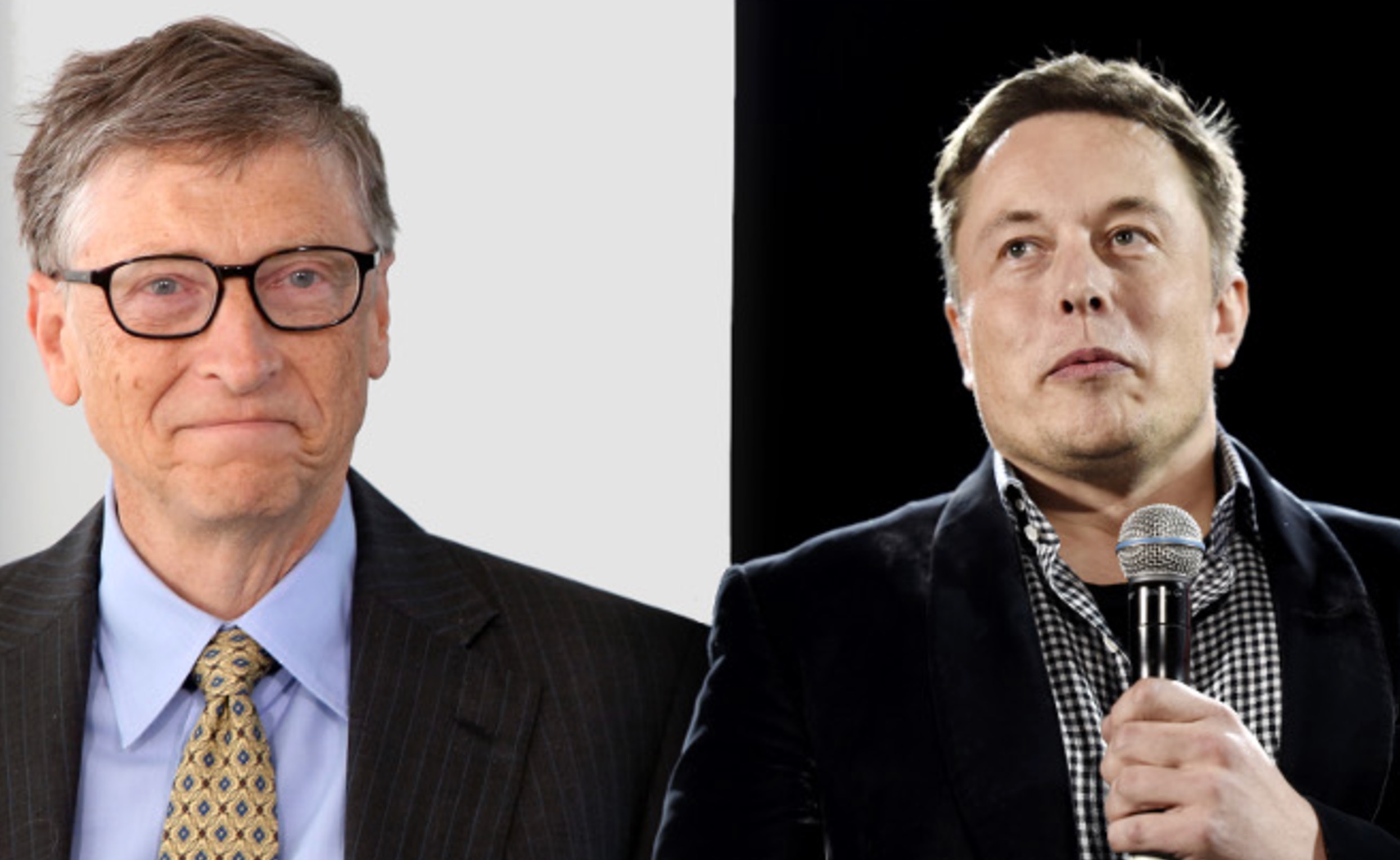
Elon Musk took his latest barb at former Microsoft CEO Bill Gates over his short position against the company, which the two have had some tensions over for a number of years.
Gates admitted to Musk several years ago through a text message that he still held a short position against his sustainable car and energy company. Ironically, Gates had contacted Musk to explore philanthropic opportunities.
Elon Musk explains Bill Gates beef: He ‘placed a massive bet on Tesla dying’
Musk said he could not take the request seriously, especially as Gates was hoping to make money on the downfall of the one company taking EVs seriously.
The Tesla frontman has continued to take shots at Gates over the years from time to time, but the latest comment came as Musk’s net worth swelled to over $600 billion. He became the first person ever to reach that threshold earlier this week, when Tesla shares increased due to Robotaxi testing without any occupants.
Musk refreshed everyone’s memory with the recent post, stating that if Gates still has his short position against Tesla, he would have lost over $10 billion by now:
Bill Gates placed a massive short bet against Tesla of ~1% of our total shares, which might have cost him over $10B by now
— Elon Musk (@elonmusk) December 17, 2025
Just a month ago, in mid-November, Musk issued his final warning to Gates over the short position, speculating whether the former Microsoft frontman had still held the bet against Tesla.
“If Gates hasn’t fully closed out the crazy short position he has held against Tesla for ~8 years, he had better do so soon,” Musk said. This came in response to The Gates Foundation dumping 65 percent of its Microsoft position.
Tesla CEO Elon Musk sends final warning to Bill Gates over short position
Musk’s involvement in the U.S. government also drew criticism from Gates, as he said that the reductions proposed by DOGE against U.S.A.I.D. were “stunning” and could cause “millions of additional deaths of kids.”
“Gates is a huge liar,” Musk responded.
It is not known whether Gates still holds his Tesla short position.
Cybertruck
Tesla Cybertruck gets small change that makes a big difference
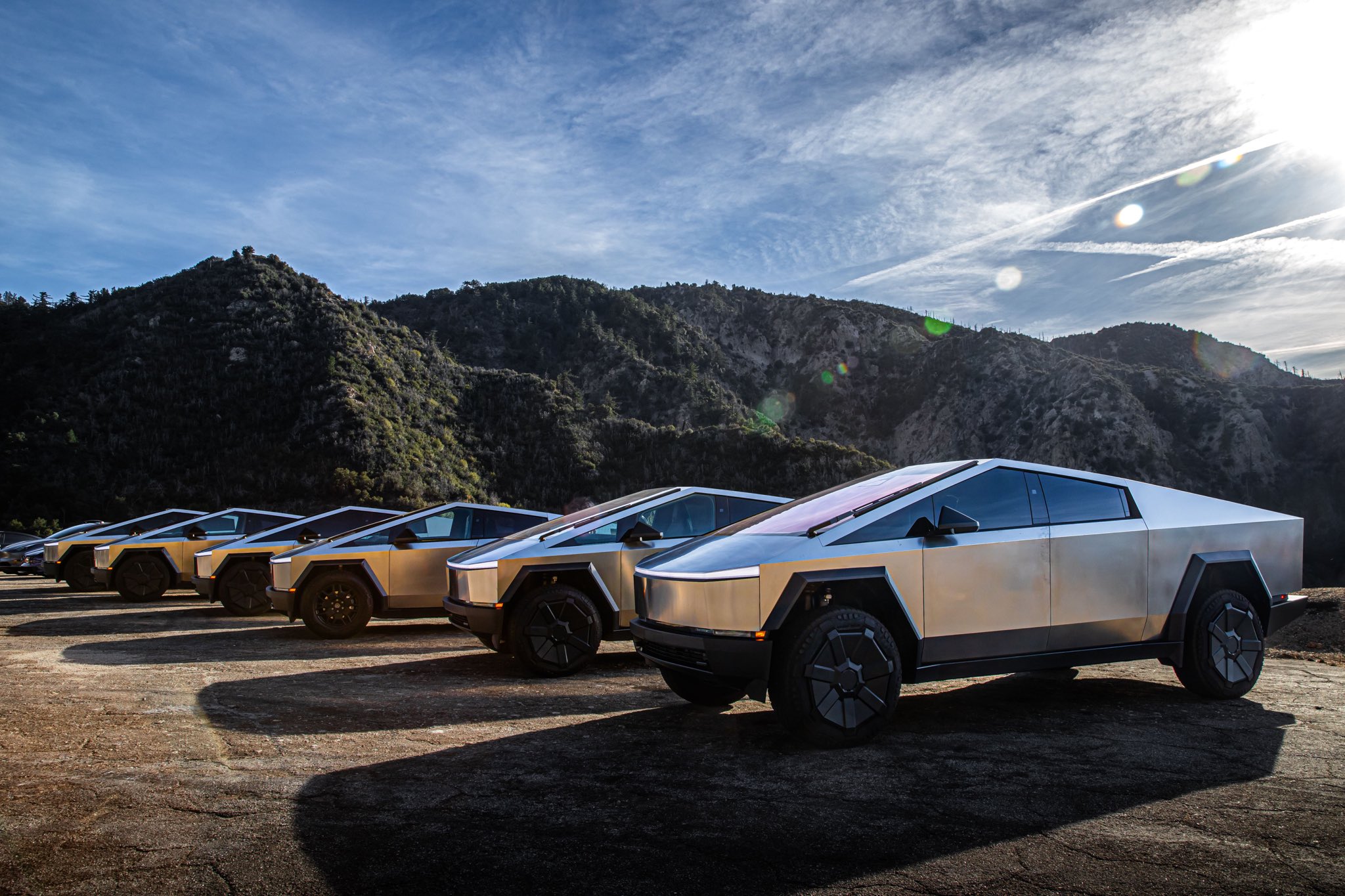
Tesla made a change to the Cybertruck, and nobody noticed. But to be fair, nobody could have, but it was revealed by the program’s lead engineer that it was aimed toward simplifying manufacturing through a minor change in casting.
After the Cybertruck was given a Top Safety Pick+ award by the Insurance Institute for Highway Safety (IIHS), for its reputation as the safest pickup on the market, some wondered what had changed about the vehicle.
Tesla makes changes to its vehicles routinely through Over-the-Air software updates, but aesthetic changes are relatively rare. Vehicles go through refreshes every few years, as the Model 3 and Model Y did earlier this year. However, the Cybertruck is one of the vehicles that has not changed much since its launch in late 2023, but it has gone through some minor changes.
Most recently, Wes Morrill, the Cybertruck program’s Lead Engineer, stated that the company had made a minor change to the casting of the all-electric pickup for manufacturing purposes. This change took place in April:
We made a minor change on the casting for manufacturability in April. Our Internal testing shows no difference in crash result but IIHS only officially tested the latest version
— Wes (@wmorrill3) December 17, 2025
The change is among the most subtle that can be made, but it makes a massive difference in manufacturing efficiency, build quality, and scalability.
Morrill revealed Tesla’s internal testing showed no difference in crash testing results performed by the IIHS.
The 2025 Cybertruck received stellar ratings in each of the required testing scenarios and categories. The Top Safety Pick+ award is only given if it excels in rigorous crash tests. This requires ‘Good’ ratings in updated small and moderate overlap front, side, roof, and head restraints.
Additionally, it must have advanced front crash prevention in both day and night. Most importantly, the vehicle must have a ‘Good’ or ‘Acceptable’ headlights standard on all trims, with the “+ ” specifically demanding the toughest new updated moderate overlap test that checks rear-seat passenger protection alongside driver safety.








